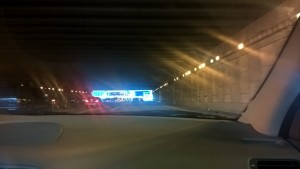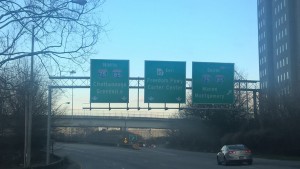https://docs.google.com/document/d/1ZZtjl7Xfqy5f7TU2iCJrwnNpMrPio-bkPz6050jPch4/edit?pref=2&pli=1#
Bibliography Article #7:Vunerability, Dependence, and Special Obligations to Domestic Animals
Weber, Eli. “Vulnerability, Dependence, And Special Obligations To Domesticated Animals: A Reply To Palmer.” Journal Of Agricultural & Environmental Ethics 28.4 (2015): 683-694. Business Source Complete. Web. 20 Mar. 2016.
The article is a reply to Clare Palmer’s argument that most people have a “special obligation” to assist domesticated animals. Because Domestication creates Vulnerability and dependency and most humans benefits from the institute of domestication. Palmer believes that even if they have not consented to such obligations or bred domesticated animals themselves. However, Eli Weber disagrees stating that palmer has given no reason for people to accept this claim and that even if there’s such a thing as special obligation and that vulnerable and dependent beings give rise to special obligation, just because we benefit from these animals does not mean we have a special obligation to them. That the special obligation Palmer disuses refers to the “moral obligations which are borne to a subset of individuals rather than all individuals with direct moral status”. Concluding that voluntarism explain the prevalent intuition to often assist domestic animals because of special obligation but rarely wild animals.
Summary 6: Better Online Living through content Mode Ration
King, Melissa. “Better Online Living Through Content Mode Ration”. Model view Culture 28, ( 14 October 2015), web. 6 March 2016.
The title of this article is Better Online Living Through Content Mode Ration written by Melissa King. The article is about how content control offers features like block and ignore functions, content/trigger warnings, block-lists and privacy options, which is helpful to people who need to moderate their time online. Some users may suffer from PTSD and need to avoid topics and people that trigger their anxiety. Post traumatic stress disorders (PTSD) can occur after you’ve been through a traumatic event. Other users may simply understand the limits of their patience and choose to make their online experience less irritating. The other topic is about the argument against content control like how the reactions are out of .
Some of the users who use these tools are labeled as weak and sensitive. So the criticizing of social modern tools leaves users in a culture that pressures people to experience far more catastrophe. Any issues that arise becomes entirely the victims problem when their attacked online and how they need to” just deal with it”. A good example of this would be cyber bullying. Content control is helpful in limiting the worst of these effects which can cause PTSD if it’s very severe or long enough.
One Major argument against content control it that people blow the abuse and harassment they receive out of proportions. Also, how they should try to be “less sensitive”. The argument draws an informal parallel to Exposure Therapy, which is a type of therapy designed to combat severe anxiety through gradual and exposure to its source. Its not about having random internet strangers hurl insults and thetas and somewhat they want to become mentally durable. However, without controlled exposure some suffering from PTSD is likely to have their trauma magnified when face with trigger content.
Also, another argument against content control rely on the myth that it’s just mean words on the internet with no real threat to safety. The idea is that harassment can’t cause PTSD according to pop culture its something that only veterans can get. For example, licensed clinical psychologist/ professor of Psychologist Caleb Lack specializes in treating anxiety states that ” Bullying has long been known to have a severe impact on the mental health, particularly if the bullying is repeated and prolonged”, ” Yes, you can get PTSD from twitter”. He also goes on to stat that its specifically the bullying or harassing that could lead to PTSD or PTSD symptoms. long-term exposure to threatening situations like harassment can for fact cause problems and is one of the major causes of PTSD.
Blacklists is one of the more recent content control to be added in direct response to hate groups. Like Gamergate, TERFs, and white supremacists. In response it has gathered vehement objection and reproach of users, mostly using legal action. The most compelling argument comes from people who do not harass or threaten people, who are in “middle of the road” and paint both sides on the issue as unreasonable. Suggesting that dialogue is in order to solve the whole harassment problem.
Summary 5: Understanding Visual Rhetoric in Digital Writing Environments
The title of this Article is Understanding Visual Rhetoric in Digital Writing Environments written by Mary Hocks. There are two main topics of her article one is how visual rhetoric operate in academic hypertexts. The other one is the three key terms of Visual Digital Rhetoric: audience stance, transparency, and hybridity and how each effects the transformative process. Analyzing the three terms/ hypertexts on the article Monitoring Order and the television program Xena The Warrior Princess.
Visual Rhetoric also known as visual strategies is used for meaning and persuasion, its importance amplified by visual and interactive hypertext and media writing. Hypertext( non-sequential) writing is defined as the underlying concept defining the structure of the world wide web. For example, professional Anne Wysocki created a hypertext titled Monitoring Order and professional Christine Boese crafted a hypertext titled ” The Ballad of the Internet Nutball”. Another example, is a website on the theater performance topic of colorblind produced by Spellman college students enrolled in a Shakespeare course. Hock stated that by putting their work on the web, the students were creating ” New Knowledge For A Real Audience”. Also, since the appearance of hypertext and other new media it’s difficult to separate words from visuals or privilege one over the other
Audience Stance refers to the interaction of the audience with the online piece of writing and Aristotelian concept of ethos; the audience can effect the audience interaction with the website. Transparency refers to the way in which the outline writing resembles the culturally familiar scenes with their own conventions. Which includes print, graphic, design, film, and web pages. Hybridity refers to the way online writing mingles visual and verbal elements in its overall presentation. Which can be the aesthetic response in online writers and in audience. For example, Boese does a ethnography and analysis of the fans and cult like dedication to the television program Xena the Warrior Princess. She describes the audience stance as the opening screen though music, images, text, and hypertext structures.
Boese creates ethos that is engaged insider, co-participant, and scholarly investigator, that assumes an engaged online audience of fans. She also refers to the audience fans as the ” co-authors”. Her visual strategies are also important to her argument used to motivate and engage in the online culture called the Xenoverse. Yet Boese interface design is not very transparent offering an unfamiliar multidimensional structure, which takes advantage of non-linear hypertexual form. Using multiple frames, linking strategies, and multiple media. Bouese uses several forms of navigation like a picture of Gabriele ( who is one the main characters and sidekick to Xena) that leads to the narrative reading texts.
Hocks demonstrates she knows that she addressing a knowledgeable professional audience. She begins her article by addressing the recently scholarly emphasis on ” the central role of the visual rhetoric for writers”. She also takes into account recent scholarly work that tries to combine rhetoric with hypertext by authors like Gary h. and Patricia Sullivan.
Hocks, Mary E. ” Understanding Visual Rhetoric in Digital Writing Environments”. College composition and Communication 54.4 ( June 2013): 629-56. web. 5 March 2016.
Atlanta Archive: Peachtree St. Civic Center
Atlanta Archive: Chattanooga, Freedom Pkwy, and Macon
Annotated Bibliography 6: How Do Animals See Us?
Hosey, Geoff. “Hediger Revisited: How Do Zoo Animals See Us?.” Journal Of Applied Animal Welfare Science 16.4 (2013): 338. Advanced Placement Source. Web. 26 Feb. 2016.
This article is about how animals( specifically zoo animals ) view us, how it is difficult to determine and most likely more difficult with other vertebrates and harder with invertebrates. Most of evidence of the animals perception is through study of primates. When particular animals and human have a history of interactions, to the extent that they can anticipate how the other is going to behave. It can be assumed that a human-animal interaction has taken place. Relationship is defined as a series of interactions in time between two individuals that are known to each other, and the interactions affects the future course of the relationship.
Human-animal relation( HAR) can be established between individuals animals and peoples, but it’s also possible to conceive a generalized HAR between one person and a group of animals. Hedgier stated 5 ways that humans can be perceived by animals: enemy, prey, a symbiont, a part of the inanimate environment, and as a member of the same species.
Annotated Bibliography 5: Choice and Control for animals in Captivity
Kurtycz, Laura M. “Choice And Control For Animals In Captivity.” Psychologist 28.11 (2015): 892-894. Academic Search Complete. Web. 26 Feb. 2016.
The article discuss the subject of learned helpfulness, which is caused by lack of control. Animals in captivity also face this problem. The captivity can lead to serious negative consequences and evidenced behaviorally and psychology. However, the hypothesis is that providing choices to captivated animals may alleviate these choices. Researchers have found that animals all have their own individual preference. Animals like specific food, social partners, and activities. Also, that animals in captivity will work for things they like chimpanzee.
It’s important to understand animals preferences when designing environments and enrichments for them. Researchers have found that having a choice has a positive effect on behavior. Zoo(s) are well equipped to deal with this question, because they usually have animals exhibits with several different locations for the animals. These buildings usually have an indoor and outdoor habitat, one viewable to the public the other is not. For example, when sheep’s where given the option to retreat from the public, they showed lower rates of undesirable behaviors.
Annotated Bibliography 4: Perception of Available space During Chimpanzee Introductions
Herrelko, Elizabeth S., Hannah M. Buchanan-Smith, and Sarah-Jane Vick. “Perception Of Available Space During Chimpanzee Introductions: Number Of Accessible Areas Is More Important Than Enclosure Size.” Zoo Biology 34.5 (2015): 397-405. PsycINFO. Web. 24 Feb. 2016.
The article is about the importance of being able to restrict animals in different places in their enclosure in Animal Management practices. This restriction causes a decrease in available space, which limits the animals activities and effect their social dynamic. A study of the behavioral, welfare-related responses of two groups of housed chimpanzees proved the importance of providing modular enclosure that provide choice and flexible usage. The study showed that arousal related scratching and yawning decreased as the number of enclosure ares increased. The decrease in arousal related yawning and scratching shows the the number available areas in the enclosure is more important then the total amount of space .
One of the important elements of animal management is safely being able to move animals between enclosure areas so they can care for the animals needs. Husbandry requirements may temporarily limit the animals to off-exhibit ares for things like: cleaning, maintenance, or animal introductions.
Atlanta Archive Contribution
Truly Living Well center for Natural Urban Agriculture is committed to growing organic food. TLW has served Atlanta by using natural GMO free food production. Natural urban agriculture is a social design centered on natural food production in the city. Its located at 75 Hilliard St NE, Atlanta, GA 30312.



